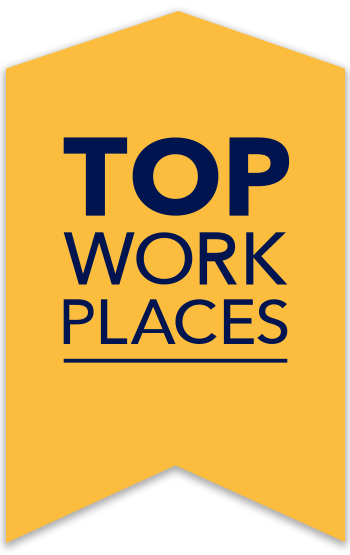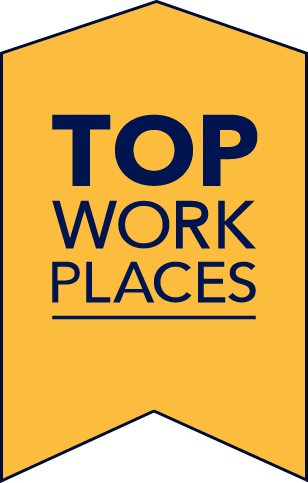Being a leader is hard work. Not only do you have to execute responsibilities, but you also have to motivate everyone else. Then build trust. Then maintain a unique company culture. Whenever you think you’re done, there’s more to do.
For that reason, some people struggle as leaders — even if they’re stellar employees. Luckily, leadership is a learnable skill, even if it doesn’t come naturally. If you’re a leader, here are twelve common mistakes to avoid so you can stress less and achieve more. After all, leaders can also help improve employee engagement and retention when focused on the right priorities.
Learn more: Signs You’re a Good Leader
Why is good leadership important?
Leadership impacts organizational culture, engagement, morale, productivity, and profitability. People with natural leadership skills are energized by connection, growth, and shared success. That’s why having a great leadership team is essential for your bottom line. Plus, as we mentioned, it improves employee retention and recruitment.
Learn more: Qualities of Great Leaders
12 common leadership mistakes
Like everyone, leaders are not immune to making mistakes. This list highlights the 12 most common leadership errors and strategies for correcting or preventing them.
1. Not taking or providing feedback
One of the most common leadership mistakes revolves around feedback. Businesses struggle when leaders cannot take or provide input. That impacts efficiency, productivity, and growth. Instead, ask for and give feedback often. This process opens communication, helps create clear expectations, and keeps everyone aligned- from low-level employees to senior leaders.
2. Not forming relationships with your team
To motivate and celebrate your team, you must get to know them. Every employee has unique passions and preferences, which, when acknowledged, significantly impact performance. Forming relationships with employees, stakeholders, and business partners helps leaders better understand their team’s communication and motivation styles. The more you know about them, the better you work together.
3. Failing to define goals clearly
You must define goals, as it directly impacts employee engagement and your bottom line. Every organization needs a plan, and leadership is responsible for connecting that plan with the company’s vision and employee goals.
With that connection, employees feel more attached to the mission and have a better chance to see their value. To avoid this, align everyone with clear, measurable goals and avoid oversharing underdeveloped plans.
4. Avoiding conflict
Sometimes there is conflict in the workplace, and when there is, leadership must get find a solution. Constructive conflict advances innovation and problem-solving, but leaders must address destructive disputes quickly and effectively. When handled correctly, these situations can boost employee trust in the organization and its leadership team.
5. Limited humility
Employees love leaders with humility. Mistakes happen, and when they do, how a leader responds speaks volumes. Because employees mirror leaders, more accountability and humility create stronger internal communication and company culture.
6. Lacking vision
Lacking vision is next on the list of mistakes leaders make, and it’s crucial to note. Leading is all about providing perspective. Without a strong vision, employees and managers can feel disengaged and might even look for new jobs.
To avoid this, be intentional about your company vision. Align it with your company values and make it authentic, clear, inspirational, and valuable. That way, business keeps moving forward.
7. Poor communication
Poor leadership starts and ends with poor communication. Effective communication is important because it protects organizations from unwanted conflicts and misunderstandings. Small gestures, like having an open-door policy, improve employee communication and help leaders be more active within their organization.
But remember, it’s about more than just face-to-face communication. Great leaders are intentional across all channels, including internal, external, written, verbal, presentation, and interpersonal interactions.
8. Disregarding employee training and development
Leaders must rely on employee training and development programs to grow and achieve goals. No longer just a form of employee appreciation, training and development initiatives help companies achieve higher levels of innovation and performance. Think about it this way: teaching employees new skills helps them operate more creatively and efficiently.
Learn more: Benefits of Employee Training and Development
9. Rushing the recruitment process
Ensuring the right people are hired for the right positions boosts performance and employee engagement. Even if leaders aren’t directly involved, they can improve the recruitment process by encouraging hiring managers to take their time and be intentional. That way, the organization finds the perfect person for the job and avoids high turnover costs.
Learn more: Employee Recruitment Strategies
10. Not leading by example
Leaders should not only delegate responsibilities well but also be able to follow their own directions. Leading by example means following rules, communicating well, taking risks, and motivating others- basically, everything you want employees to do. Don’t just talk the talk. Walk the walk too.
11. Micromanaging
People with limited leadership experience often micromanage, not knowing the damage it causes. Micromanaging causes unnecessary stress and hinders productivity. Instead, give employees space to find autonomy and solve problems independently. Be available in case they need help or feedback. Just don’t be a helicopter boss.
12. No employee recognition
Of all the common leadership mistakes, not showing employee recognition is one of the easiest to fix. Appreciation and recognition push employees to perform well and help their organization grow. And the best part? It’s easy to do and has a significant impact on company culture.
Some of the best ways to show appreciation include verbal praise, public acknowledgments, team celebrations, social media recognition, and peer recognition. To offer consistent and meaningful recognition, tailor your approach to match employee appreciation preferences.
Learn more: Benefits of Employee Recognition
Top Workplaces for Great Leadership
Great leaders deserve great recognition. Does your organization have an award-worthy leadership team? Nominate today to earn your Top Workplaces for Leadership award and explore the many benefits of credible employer recognition!

 Stand out with an award-winning
Stand out with an award-winning
